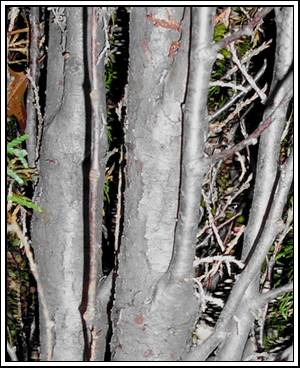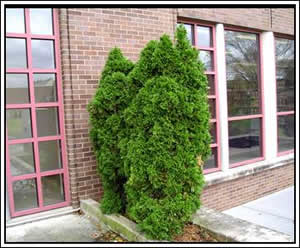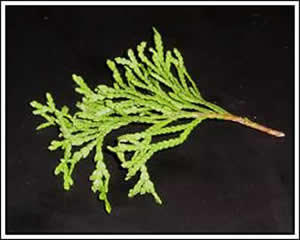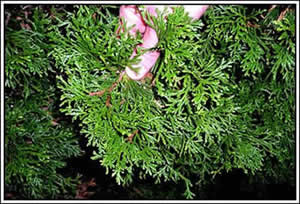



Interesting Information About Plant:
Arborvitae was the first tree from North America to be introduced to Europe when French explorers brought the tree to Paris. The tree became a valuable asset when, on one of Jacques Cartier’s long sea voyages in 1536, it was discovered that a tea made from the bark and leaves cured scurvy. In 1558, the tree appropriately received the name “arborvitae,” meaning “tree of life” in Latin. The oil from these trees is still used today for medicinal purposes. While traditionally the soft wood was used for canoe frames and starting fires, today it is used as lumber, especially for poles, posts and cross-ties. In North America, the Oriental arborvitae is mainly used in landscaping. Many varieties of shape are available, and the tree can even be maintained as a hedge (with persistent trimming). During New Year’s celebrations in China, the aromatic branches are used as good luck charms.
Arborvitae
Common Name(s): Oriental Arbrovitae, Chinese Arbrovitae
Scientific Name: Thuja orientalis
Family Name (Scientific and Common): Cupressaceae (Cypress)
Continent of Origin: Asia
Plant Growth Habit: Tree
Height at Maturity: More than 10 Feet
Life Span: Perennial
Seasonal Habit: Evergreen Perennial
Growth Habitat: Full Sun or Partial Sun
Manner of Culture: Landscape Tree
Thorns on Younger Stem: No
Cross Section of Younger Stem: Roundish
Stem (or Trunk) Diameter: Between The Diameter of a Broom-Handle and a Coffee-Mug
Produces Brownish Bark: Yes
Bark Peeling in Many Areas: No
Characteristics of Mature (Brownish) Bark: Lines Go Up-Down / Bumpy
Type of Leaf: Scale-Like
Length of Leaf (or Leaflet): Less than Length of a Credit Card
Leaf Complexity: Simple
Edge of Leaf: Smooth
Leaf Arrangement: Opposite
Leaf has Petiole: No
Patterns of Main-Veins on Leaf (or Leaflet): Parallel
Leaf Hairiness: No Hairs
Color of Foliage in Summer: Green
Change in Color of Foliage in October: No Change
Flowering Season: Spring
Flowers: Single
Type of Flower: Like a Pine Cone
Color of Flower: Brown
Shape of Individual Flower: Radially Symmetrical
Size of Individual Flower: Smaller than a Quarter
Sexuality: Male and Female on Same Plant
Size of Fruit: No Fruit
Fruit Fleshiness: No Fruit
Shape of Fruit: No Fruit
Color of Fruit at Maturity: No Fruit
Fruit Desirable to Birds or Squirrels: No Fruit
Louisville Plants That Are Most Easily Confused With This One: Juniper
Unique Morphological Features of Plant: Leaves are scale like and lie on one plane
Poisonous: None of Plant
Pestiness (weedy, hard to control): No
Page prepared by: Whitney Talbott November 21, 2004